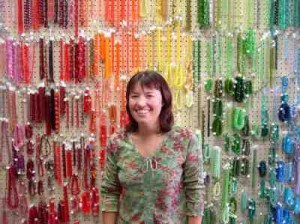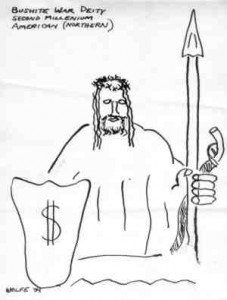Article by Ken Jessen
Local History – January 2005 – Colorado Central Magazine
ONCE UPON A TIME, the Mexican government expanded its domain northward into what is today New Mexico and southern Colorado, not only to add to their territory, but to provide a buffer zone to reduce raids by aggressive Indians. Wealthy families were given generous land grants and the only requirement was that they promise to establish a colony.
Early efforts to settle the San Luis Valley date back to 1832 along the Conejos River, but hostile Indians repeatedly drove the settlers away. The settlement of San Francisco was started in 1843, but the Spanish-speaking pioneers were immediately under attack.
Atanacio Trujillo from El Rito, New Mexico came into the San Luis Valley in 1847 to trap. His tactic was to make friends with the Utes. After returning home, he encouraged his neighbors to join him, but they feared for their lives. The following year, Trujillo and his son Luis Rafael returned and established a permanent settlement they called Los Rincones (the corners). Others followed, and 14 settlements were established in the San Luis Valley between 1848 and 1854.
In 1846, the United States declared war on Mexico. The United States captured the land north of the Rio Grande including New Mexico and the southern portion of Colorado. On February 2, 1848, the Treaty of Guadalupe Hidalgo was signed and it gave the former Mexican citizens, who now resided in the United States, the right to keep their land.
To protect settlers against marauding bands of Indians in the San Luis Valley, Fort Massachusetts was constructed in 1852. It housed a small garrison, but the fort “did not awe the Indians,” according to A Colorado History by Ubbelohde, Benson and Smith. Treaties with the Utes and Jicarilla Apache and a new fort soon made the settlers’ situation in the Valley a lot more secure, however. Critics maintained that Fort Massachusetts’ location under Mount Blanca was impractical, and in 1858, Fort Garland was opened six miles to the south.
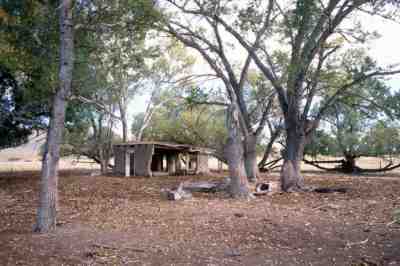
WHEN THE U.S. WON the Mexican War, the Salazar family was farming the area along the Rio Grande and Chama River near Española at Chamita, New Mexico. Antonio de Salazar had petitioned for land in this area in 1714. During the early 1850s, members of the Salazar family moved north and joined the Trujillos in Los Rincones. Ken’s great great grandfather, Francisco Esteban de Salazar, spent his life in Los Rincones and was the first family member to be buried in the area. His grave is under the church in Conejos. (Subsequent burials of the Salazar family have been at the Los Cerritos Cemetery. )
Los Rincones is approximately 4 miles southeast of Manassa on M Road and immediately east of Rio San Antonio. Los Cerritos is approximately a mile and a half west of Los Rincones along the North Branch of the Conejos River.
The settlement of Los Rincones had a store and a number of small casitas and grain storage buildings. The remains of some of those structures are located on the Salazar ranch. A school along M Road between Los Rincones and Los Cerritos served both communities. Henry Salazar attended this school through second grade, and then went to the school in Manassa.
IN ADDITION to the above structures, there was a Penitente morada (place of worship). The last service was held in the late 1970s or early 1980s. In 1990, the saints were given away, and the cross on the south side of the building was removed. Most of the Penitente members were aging, and the sect was attracting few young men. John Salazar, Ken’s brother, was an exception and became a member of Los Hermanos Penitentes.
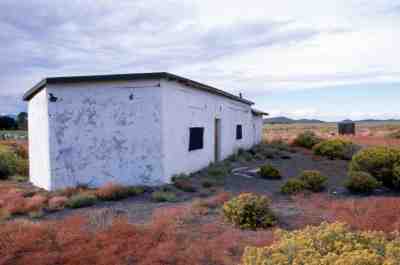
Ken looked back on his experiences with the Penitentes in the forward for Ruben Archuleta’s new book, Land of the Penitentes; Land of Tradition. Ken’s father and mother and his seven siblings would pray on Good Friday from noon until 3:00 p. m. , then the family would walk over to the morada and join the service held by the Penitentes. The morada was located less than a mile from the Salazar home. Ken noted that during Holy Week, the members would spend their entire time in worship.
At Los Cerritos located west of Los Rincones, there was a store and the San Francisco Catholic church. The church sat to the east of the cemetery. Behind the church was a cinder block dance hall. Located north of the church, a post office served Los Cerritos from 1889 to 1914. Today, only a grove of trees marks the town site.
THE DEMISE of the San Francisco Catholic church was especially sad to the Salazar family. The archdiocese elected to close the church, and the last service was held in July 1970. Over time, the church was vandalized, and even its stained glass windows were stolen. After it burned to the ground, the rubble was removed by the county. Salvaged from the ruins were two of the statues, and they are in the home of Emma Salazar, Ken’s mother.
Both Los Rincones and Los Cerritos became abandoned town sites. Neither settlement had a water system, sewage, electricity, schools or paved roads. Lack of utilities prompted some of the families to move to larger San Luis Valley towns. If it had remained a viable town, Los Rincones would have become the oldest town in Colorado. Just a year after Los Rincones was founded, La Plaza de los Manazanares was established north of Costilla. The name was changed in 1915 to Garcia, and it is now the oldest continuously occupied town from this early period of immigration. (Nearby San Luis is the oldest incorporated town in Colorado. )
Ken Salazar’s parents, Henry and Emma, had five children when Emma became pregnant with what they thought was their sixth child. Emma was quite ill during the last month of her pregnancy, and the Salazars rented an apartment in Alamosa to be close to the hospital. One evening just before midnight, Henry took Emma to the hospital. He sat in the waiting room, and the nurse came out and congratulated him on the birth of a baby girl. Henry waited to see his wife, but just after midnight, the nurse returned. She congratulated him again, this time on the birth of a son. Henry was quite shocked and returned to his seat and waited to see Emma. The nurse came back a third time and congratulated him once again, this time on the birth of a daughter.
THE DOCTOR IN Alamosa apparently knew nothing of the fact Emma was carrying more than one baby and treated this as a normal, single pregnancy. They found the cause of Emma’s illness; a fourth dead baby in her womb. Because of low birth weight, the doctors feared that the children would not survive, but they did. Henry and Emma named them Elliott, Margaret and Florence for the doctor and two nurses. Altogether their children were Leandro, LeRoy, John, Ken, Elaine, Elliott, Margaret, and the daughter called June (whose given name was Florence).
The parents must have instilled an ardent aspiration for higher education into their children. Leandro earned a degree in Spanish and a masters degree in theology. He was part of the Cesar Chavez farm labor movement in California to provide fair working conditions for immigrant families; in pursuing that goal, he gave up on his priesthood. Leandro was killed in 1992 in a farm accident.
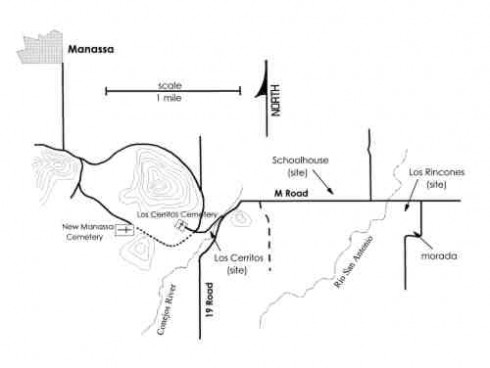
LeRoy served in the Army, and received a degree in engineering followed by a masters degree in agricultural engineering. After living in Peru for a year, LeRoy returned to the valley and established a successful consulting business. He is regarded as the foremost water expert in the area. To care for his parents, LeRoy sold his business and now raises natural beef.
John was elected to the Colorado State House of Representatives in 2002, and became a United States Representative from Colorado in 2004. He has a degree in business from Adams State College, and like LeRoy, served in the Army. John runs a potato seed farm in the San Luis Valley.
Ken received his political science degree from Colorado College and his law degree from the University of Michigan. He has also received honorary doctorate of law degrees from Colorado College and the University of Denver. Ken was elected Colorado Attorney General in 1998 and was re-elected for a second term in 2002. In 2004 he became a U. S. Senator.
Elaine received a degree in history from Colorado College and an MBA from the University of Texas. Margaret has a degree in mathematics from Colorado State University. Elliott has a degree in business and Spanish from the University of Texas. June has a degree in mathematics from Colorado State University and has worked as an engineer for Intel.
Ken has written, “I did not know then, as I know now, that my life as a public servant in Colorado would be very much influenced by the four centuries of history of northern New Mexico and the San Luis Valley inhabited by my ancestors.”
Ken Jessen is the author of many books of Colorado lore, among them the trilogy Ghost Towns, Colorado Style. An earlier version of this article appeared on Colorado GetAways.


